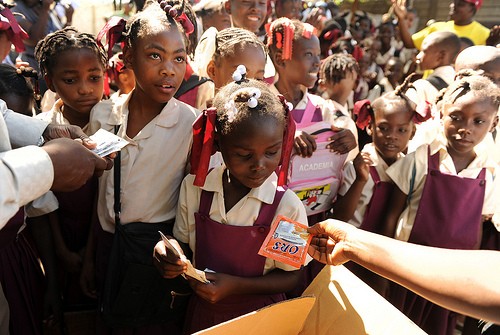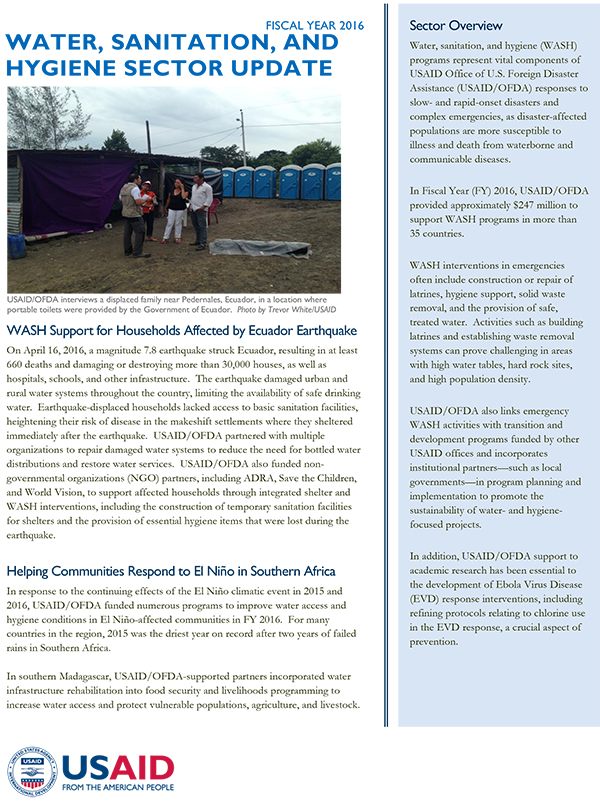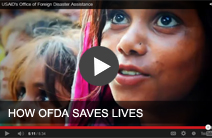- What We Do
- Agriculture and Food Security
- Democracy, Human Rights and Governance
- Economic Growth and Trade
- Education
- Ending Extreme Poverty
- Environment and Global Climate Change
- Gender Equality and Women's Empowerment
- Global Health
- Water and Sanitation
- Working in Crises and Conflict
- Disaster Assistance
- Political Transition Initiatives
- Conflict Mitigation and Prevention
- Countering Violent Extremism
- Disaster Risk Reduction
- Peacebuilding and Reconciliation
- Providing Safe & Secure Environments for Development
- Recovering From Crisis
- Resilience
- Tech Challenge for Atrocity Prevention
- World Humanitarian Day
- U.S. Global Development Lab

Water, sanitation, and hygiene (WASH) programs represent vital components of USAID Office of U.S. Foreign Disaster Assistance (USAID/OFDA) responses to slow- and rapid-onset disasters and complex emergencies, as disaster-affected populations are more susceptible to illness and death from waterborne and communicable diseases.
In Fiscal Year (FY) 2016, USAID/OFDA provided approximately $247 million to support WASH programs in more than 35 countries.
WASH interventions in emergencies often include construction or repair of latrines, hygiene support, solid waste removal, and the provision of safe, treated water. Activities such as building latrines and establishing waste removal systems can prove challenging in areas with high water tables, hard rock sites, and high population density.
USAID/OFDA also links emergency WASH activities with transition and development programs funded by other USAID offices and incorporates institutional partners—such as local governments—in program planning and implementation to promote the sustainability of water- and hygiene-focused projects.
In addition, USAID/OFDA support to academic research has been essential to the development of Ebola Virus Disease (EVD) response interventions, including refining protocols relating to chlorine use in the EVD response, a crucial aspect of prevention.









Comment
Make a general inquiry or suggest an improvement.